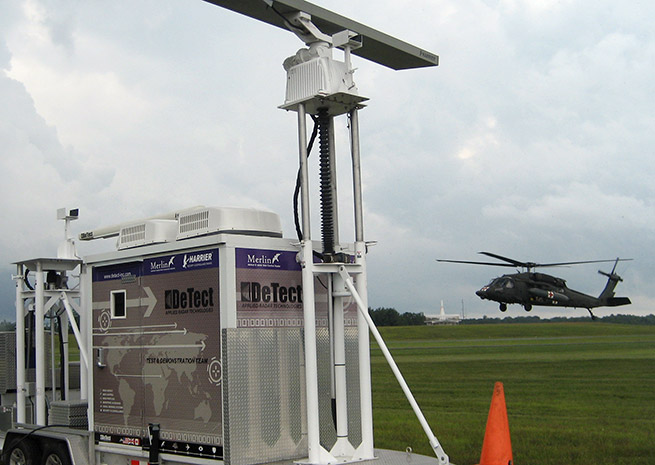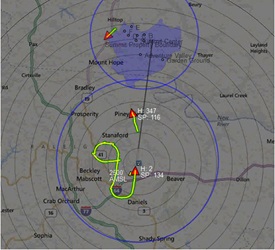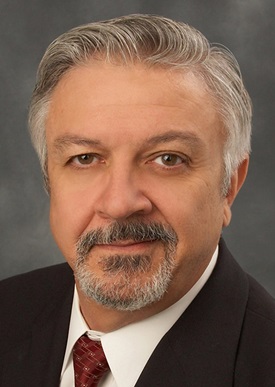
It began when a small airport in mountainous West Virginia, the only nontowered airport in the state with commercial service, failed to convince the FAA to fund a control tower but refused to take “no” for an answer.
“No matter how hard we tried, we just couldn’t develop the numbers to justify building a tower,” said David Byers, a college professor and airport consultant who has supported many efforts by local officials seeking towers. “Normally that’s the end of the story.”
In Beckley, W.Va., it sparked a Byers brainstorm, and county officials agreed to pay the first $75,000 toward an effort with potential to benefit aviators nationwide: developing a radar-based system that can automate traffic advisories, replacing at least one critical function of towers, particularly the smaller contract towers recently placed in cost-cutting crosshairs.
The early (radar) returns proved positive: A portable system provided by a Florida company succeeded in tracking an unusually busy airspace when the Boy Scouts of America held their national jamboree about six miles from Raleigh County Memorial Airport in July. Eight Virginia National Guard helicopters came and went, sharing airspace with C-130s and the usual mix of general aviation and commercial traffic that uses the airport. Forty miles north in Charleston, controllers got a look (though controllers were not allowed to use data from the test system for operations) at something they had never seen: a clear picture of air traffic around an airport normally shadowed from their radar screens. There is no FAA radar coverage below 5,000 feet over Beckley.
“You could see aircraft 12 miles out,” Airport Manager Tom Cochran recalled of that July test in a telephone interview with AOPA. Black Hawk helicopters were making regular trips between the jamboree and the airport. “That was a real benefit to us, to be able to see where they were.”
‘It all made sense’
The Synthetic Air Traffic Advisory System that Byers conceived invites comparison to automated weather stations. Instead of a computer-generated voice announcing winds, temperature, and cloud conditions, the synthetic voice would announce radar targets over the radio, and could even be made capable of directing advisories to specific aircraft identified by transponder returns. Aircraft without transponders could still be “painted” on the primary radar. A second radar system able to track surface movements could be added to alert pilots to unsafe runway conditions, such as a deer standing on the centerline.
Off-the-shelf technology would “essentially, provide much of what a good low level contract tower would do,” said Byers. “Conceptually, it all made sense.”
Byers hopes to raise $3 million from public and private sources to develop a working prototype.
“That gives us the hardware and the time to develop the software and have it vetted by the FAA,” Byers said.
Given the current climate of strident demands for federal frugality within the halls of Congress, neither Byers nor Raleigh County airport commissioners are optimistic the FAA will finance prototype development, though the system drew promises from West Virginia’s congressional delegation that funding will be sought, according to local press reports. Byers hopes to find much of the needed funding from the private sector, though “it’ll take somebody who can handle the risk.”
Byers said the system is both viable, in the sense it can enhance safety when human controllers are not available, and marketable to airports small and large. “Everything that we’ve seen so far suggests that yes, it’s both,” Byers said.
The potential market includes both towered and nontowered airports. Byers noted that many control towers are staffed part time, leaving overnight arrivals and departures to see and avoid without radar support. Just as automated weather systems are often turned on at closing time, a tower staff of the future could flip a switch and let the computer take over traffic calls when the tower is closed.
‘Looking for alternatives’
Byers estimates that once the technology is developed and tested, an autonomous system could be installed for $1 million to $1.5 million per airport, about half the cost of building a manned control tower. A synthetic system could be operated much more cheaply than a manned control tower. Byers estimates that annual maintenance would cost about $50,000 or less, about one-tenth of the cost of staffing a typical Class D tower for 14 hours a day.

In addition, the radar and other data (such as transponder returns) captured by the automated system can be fed to any number of users, including controllers at other airports, and even pilots in cockpits. Airport managers could use data gathered over time to answer questions about traffic volume over time with precision.
The first step, financed by the Raleigh County Airport Authority, was to verify that a radar system built to track migratory birds (and warn aviators of avian activity that could impact flights) can adapt to track airplanes.
“The demonstration project really gave us the encouragement to go forward,” Byers said. “Boy, did this thing work just superb.”
The radar, a portable unit on a trailer developed by DeTect of Panama City, Fla., tracked airborne targets that were confirmed by an observer. Another company, PASSUR Aerospace, demonstrated the potential of its own systems to augment the primary radar with a Web-based system that combines data from a variety of sensors—including devices that “ping” transponders and can triangulate an aircraft’s position based on the return—into a complete picture of what’s in the air, and what’s on the ground.
While cameras could further augment everyone’s situational awareness, Byers said the system is fully autonomous, and that makes it different from other approaches to “virtual” air traffic control that pipe radar and camera signals to a remote, human controller.
The one thing the synthetic system won’t do that a manned tower will is suggest a course of action to resolve a traffic conflict. While software can be written to identify a potential collision, be it in the air or on the ground, FAA regulations and liability issues preclude suggestions by the computer. It may still prove the best option left for many airports: Byers suspects many of the contract towers currently serving airports around the country will be empty sooner than later.

“I feel I’ve got a window of about two years. That’s when the towers are going to really start shutting down,” Byers said. “People are going to be looking for alternatives.”
Byers has worked with upward of 70 airports over the past 15 years, analyzing data and making a case to install or retain control towers. When the FAA announced in March plans to close 149 contract towers (a decision later reversed), Byers calculated the cost: 101 aircraft destroyed, 216 lives lost, and $2.5 billion in net loss in the first six months. Byers said he arrived at those figures using the FAA’s own cost/benefit analysis methodology.
While the towers were spared, this time, Byers, who is also a pilot and longtime AOPA member, believes their days are numbered. Even if the current towers survive, airports like Raleigh County Memorial seeking new towers will find the sledding tough.
“My sense is that nobody wants to grow the program any further than it’s already gone,” Byers said of contract towers. “I hope I’m wrong.”
Cochran said he was “much impressed” by the July demonstration, and local officials may extend further financial support beyond the $75,000 already provided in the interest of finding a solution that could serve many.
“We’d like to see Beckley as the lead on this,” Cochran said. “We initiated it. We had the interest. We took the risk. This system would not only serve Beckley, but other places across the country that have the same issues that we have.”
Radar coverage that begins 5,000 feet above the field thanks to mountainous terrain currently limits IFR arrivals and departures to “one in, one out” and can discourage business and commercial traffic that Raleigh County hopes to attract. Beyond serving the massive Boy Scout facility, the county is actively marketing a pair of industrial parks flanking the airport.
“We want to be able to be an airport that can be utilized by everyone,” Cochran said, noting both business and commercial operators would probably be less reticent to use the airport if traffic advisories were available. “A lot of corporate aviation will not fly into an uncontrolled field.”
Byers said there are technical issues to be worked out, such as writing the algorithm that will allow the system to recognize potential conflicts and trigger advisories, but he is confident that with funding, the system could be available for airport use before time runs out on the towers.



